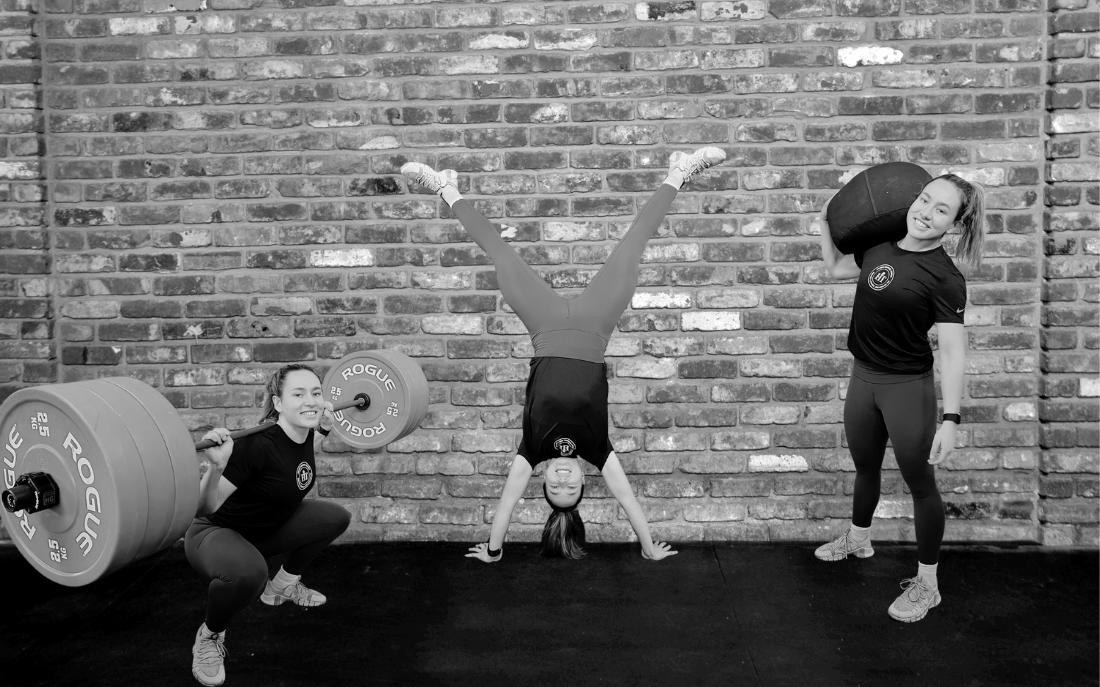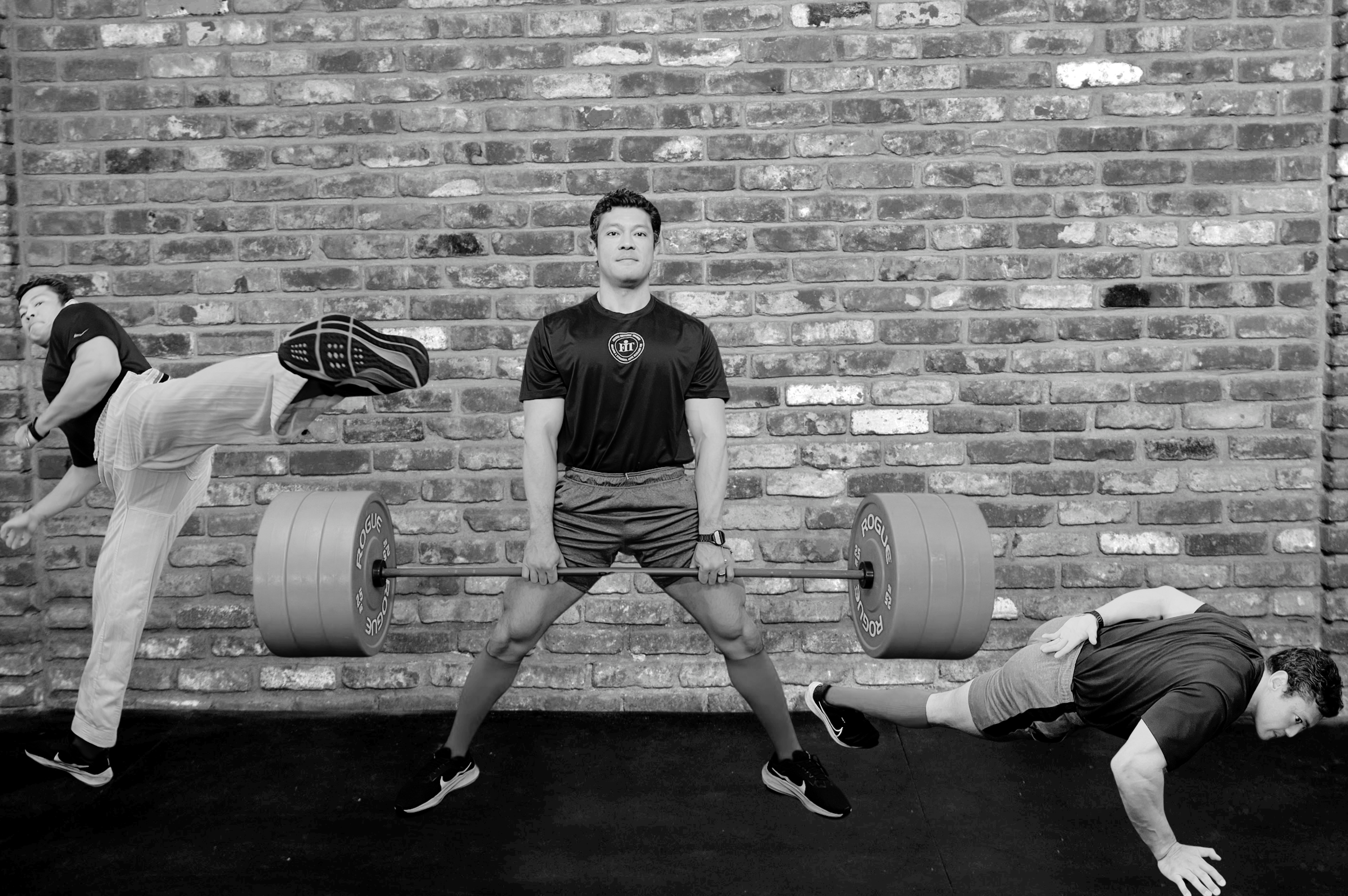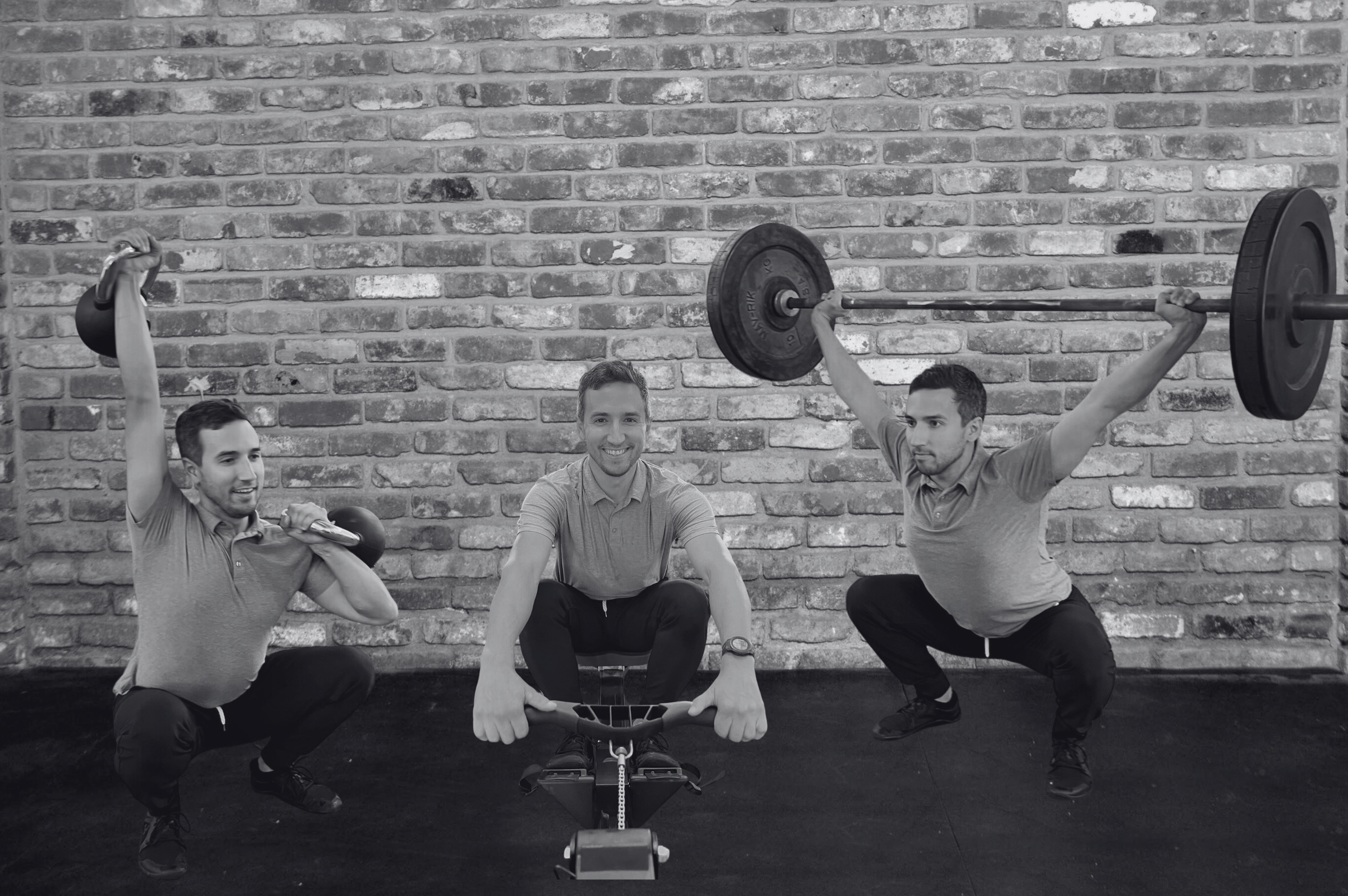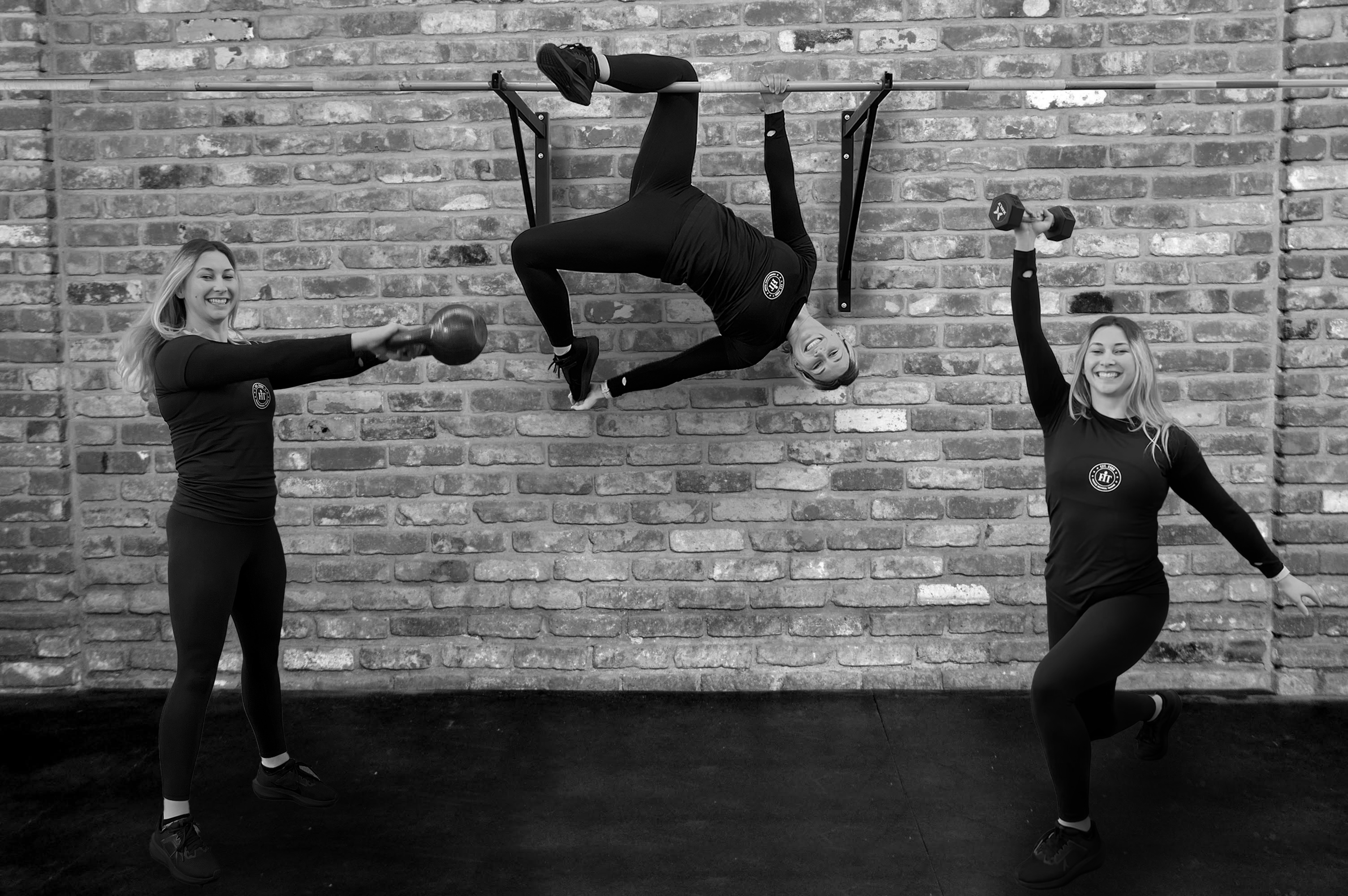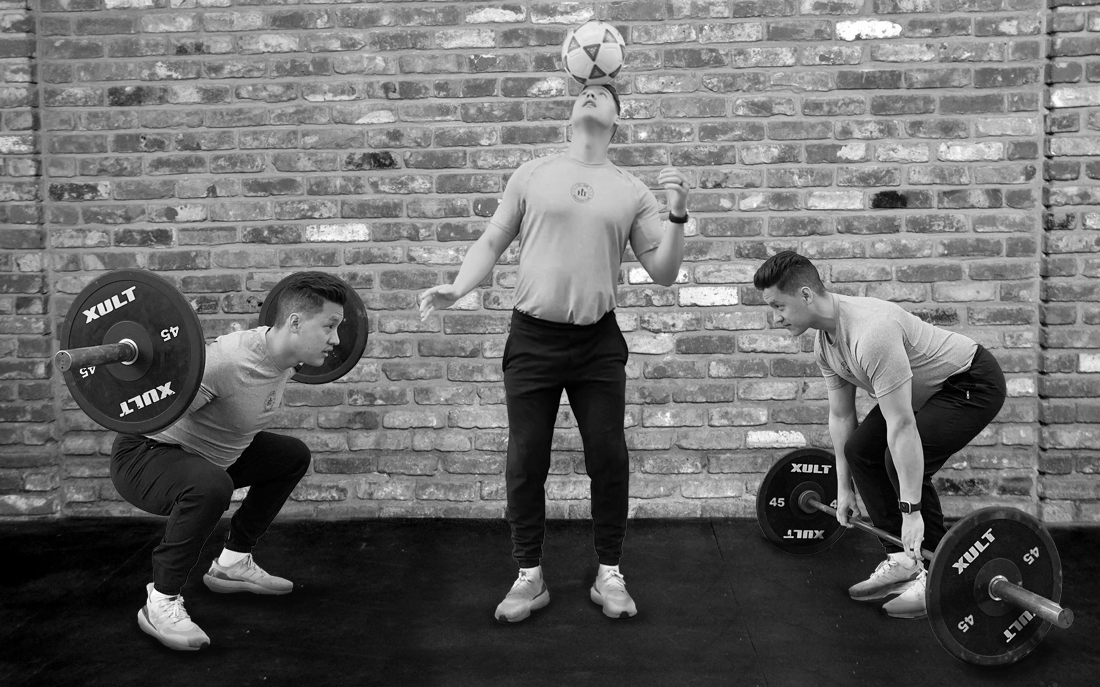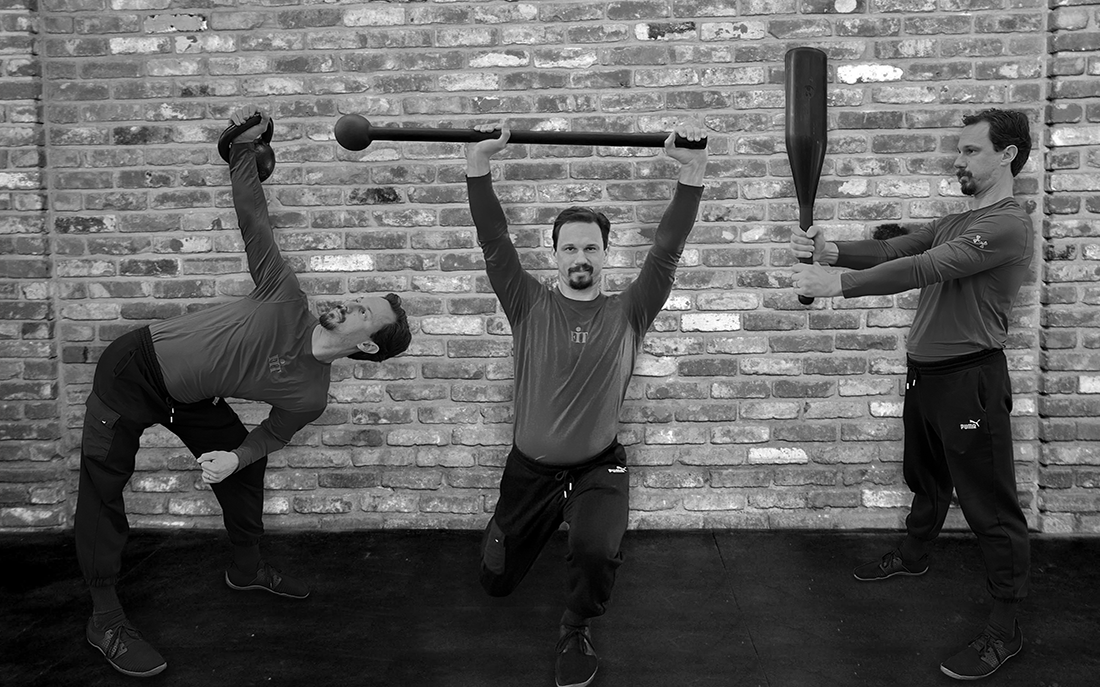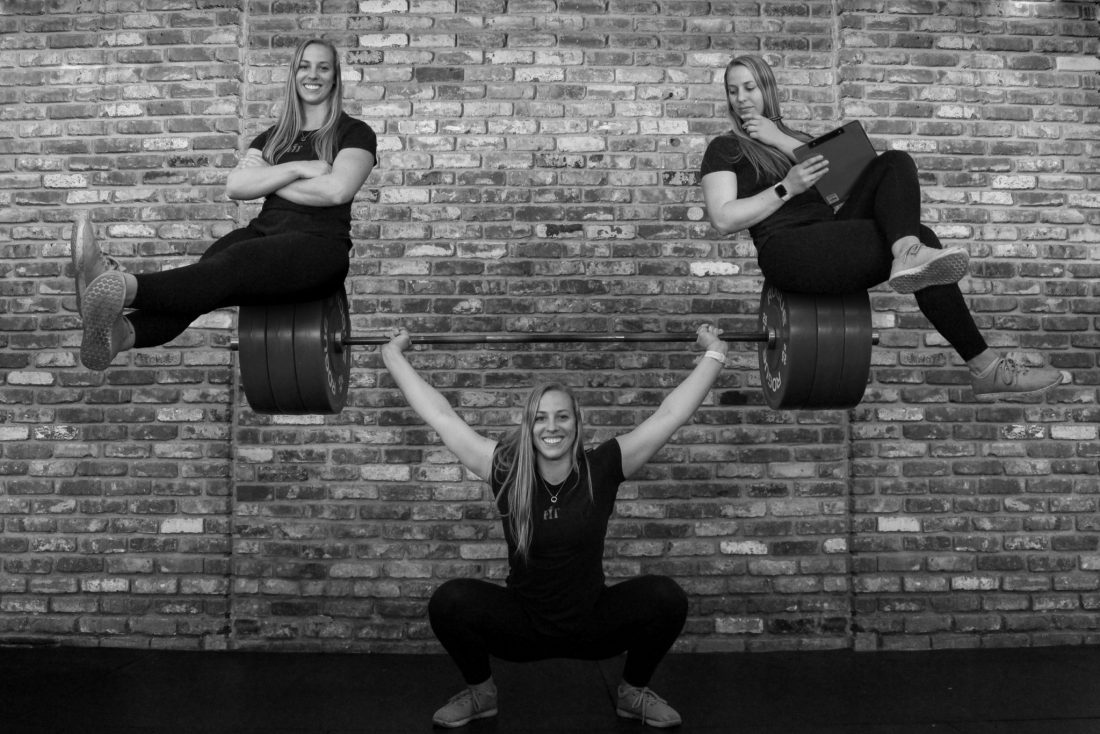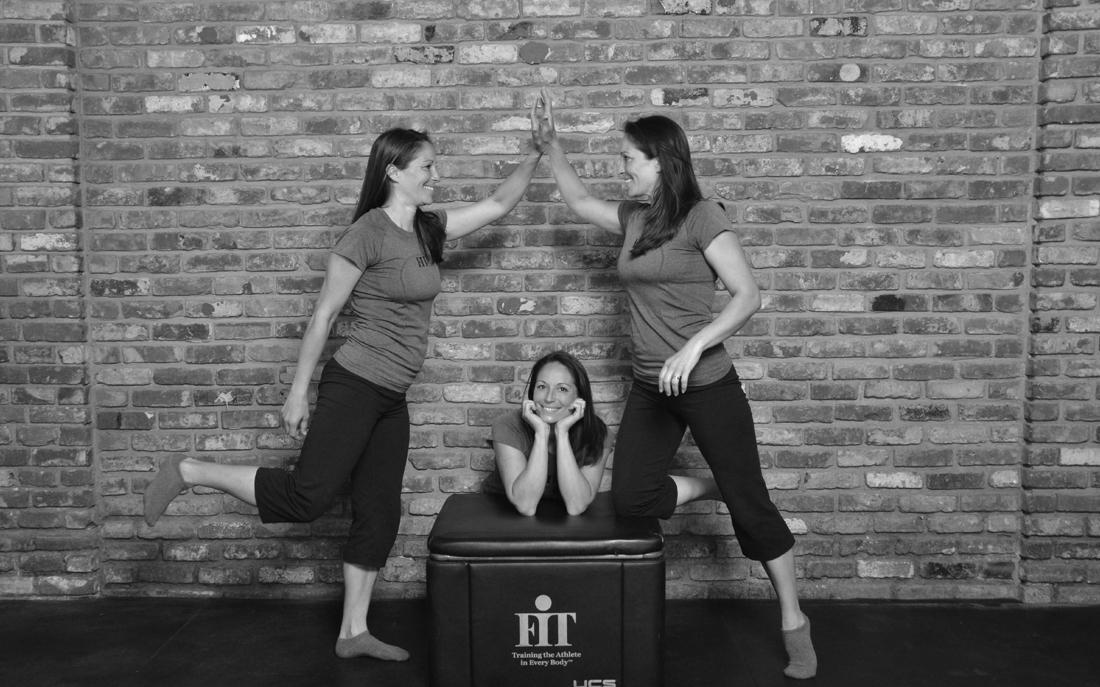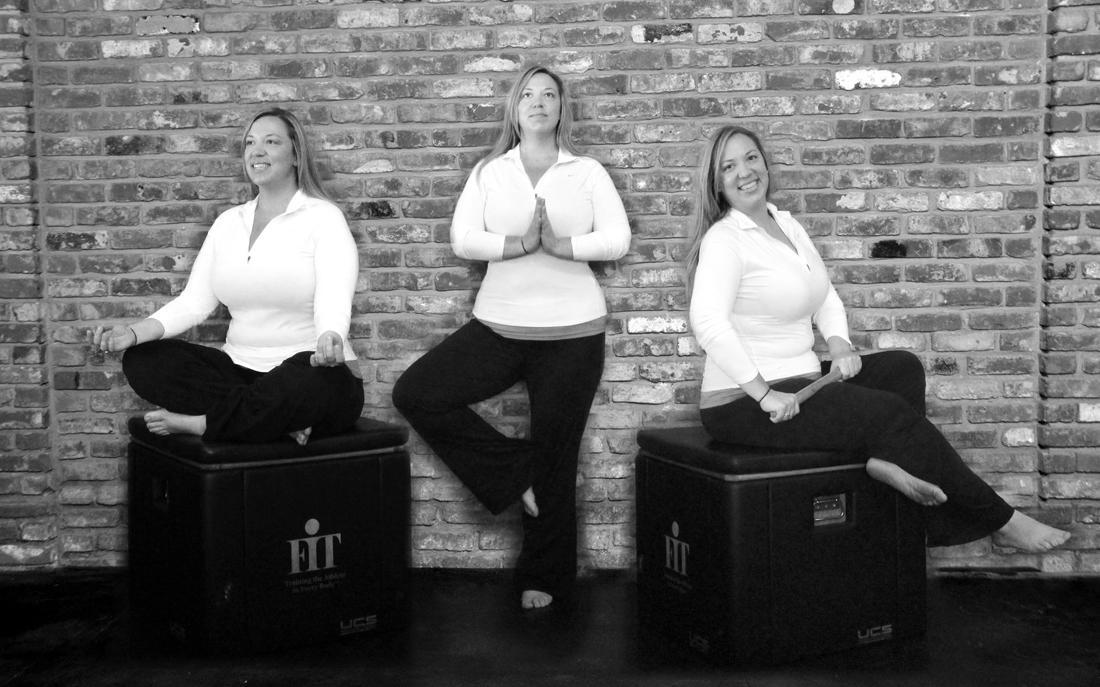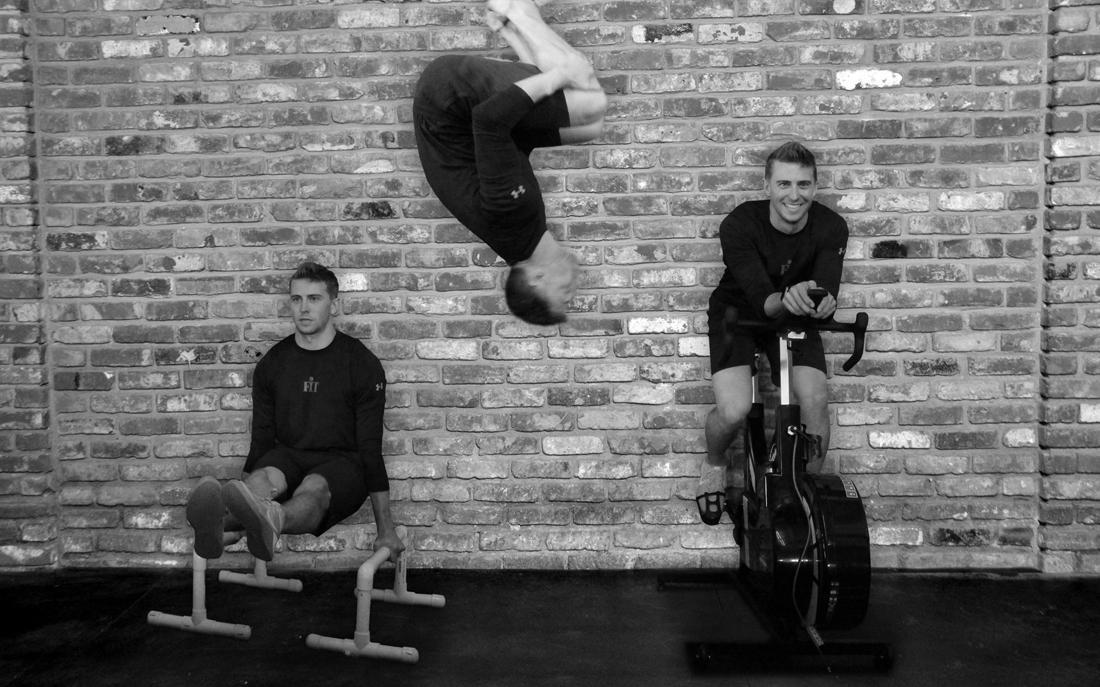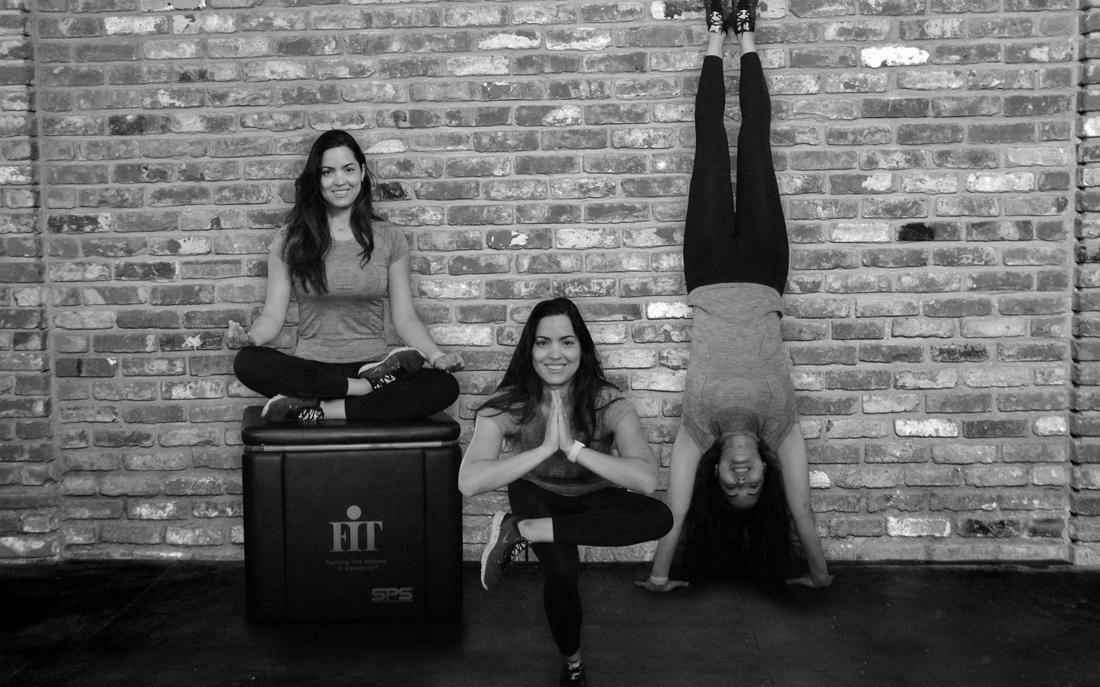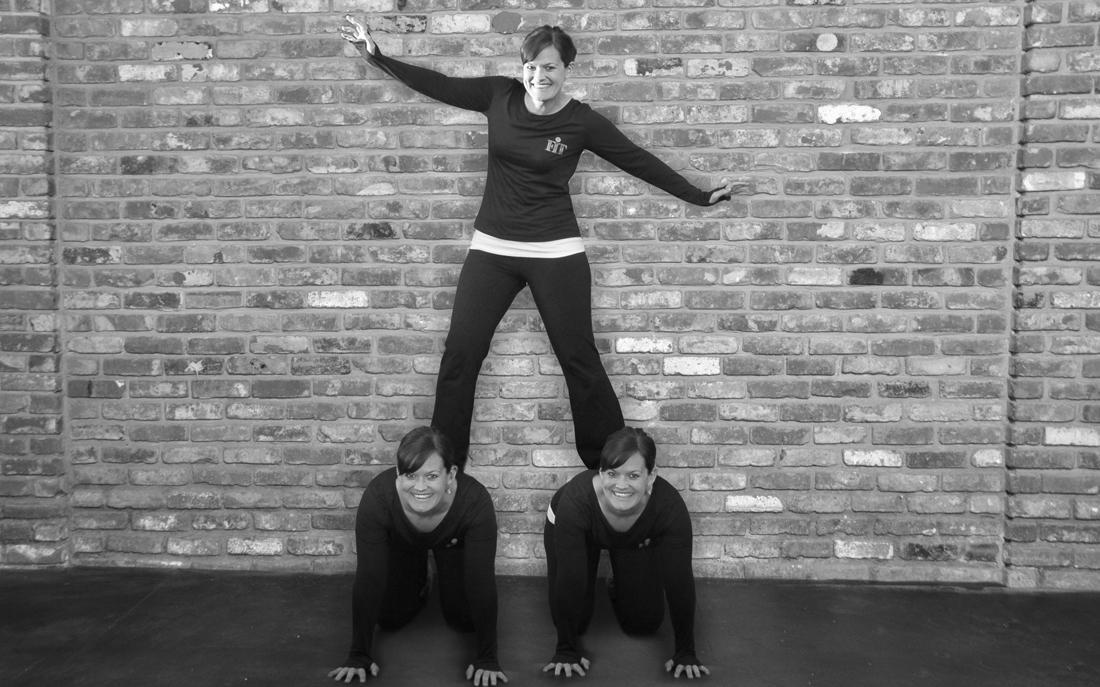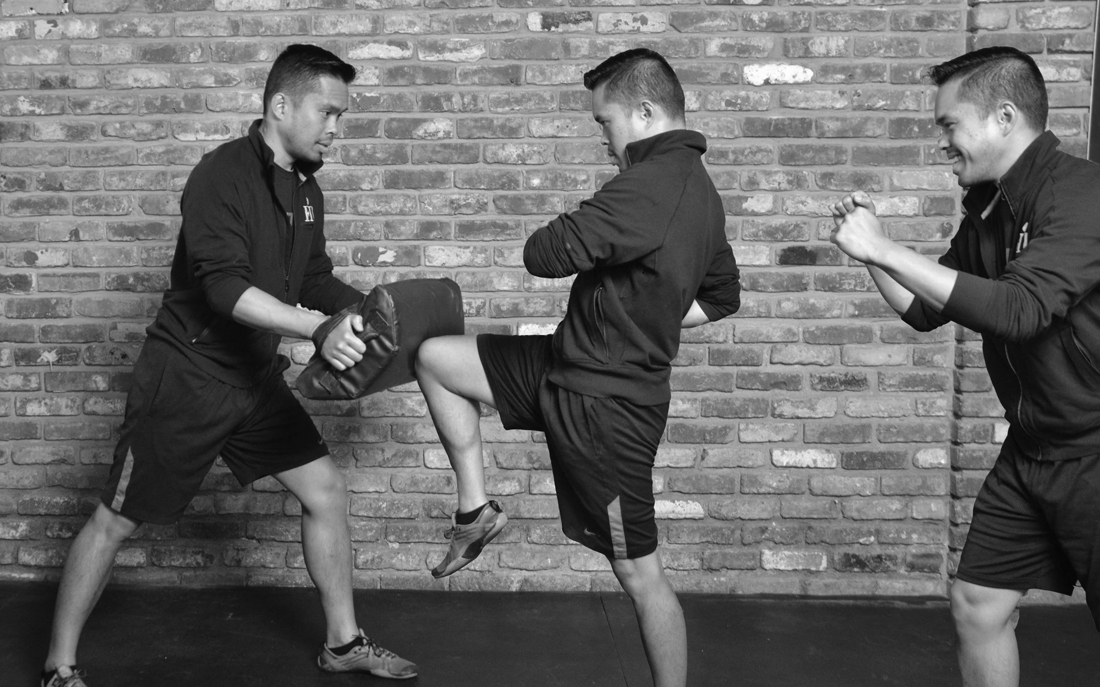Adding Conditioning To Your Strength Training Program
In the world of health and fitness, many different trends and popular workouts have come and gone. From jazzercise to aerobics and Crossfit to Orange Theory, these methods tend to focus on calorie burn and weight loss. However, in the wake of the COVID-19 pandemic, more people are looking to cardiovascular training as a means to boost immune function and overall health. It is now common knowledge that strength training is important for health and longevity, yet many struggle to combine the two into an effective program. In this blog post, we will discuss how to balance cardiovascular exercise with strength training. Regardless of what your current training program looks like, it’s important to start with three key areas that will inform nearly all decisions about how to best manage and balance your training program.
Where to Start – Goals, Work Capacity and Recovery
Before making any changes to your current exercise routine*, it is important ask yourself three key questions:
- What are my goals?
- What is my work capacity?
- How is my recovery?
*Be sure to also check with your doctor before making any changes to your exercise program.
Having clear goals will help determine the methods and volume of training that is required to help you achieve them. Work capacity is how much total energy you have to devote to training. Recovery is how well your body is able to adapt to and recover from the stimulus of training. Understanding your capacity for work and ability to recover from that work will help determine how realistic and attainable your goals are. Building more capacity necessitates self-awareness and frequent check-ins with the body. As you gain more experience, training and recovery will become more intuitive.
The Work Capacity Pie
An entire book could be written on how stress and lifestyle play a role in work capacity, but for simplicity sake – think of work capacity like a pie. This pie represents how much total energy someone can dedicate to exercise activity. If a powerlifter devotes 5-6 days a week to strength training, they are using a majority of the pie to become as strong as possible. Including a small amount of cardio would likely have some health benefits. However, too much would begin to reduce performance and strength because there is less energy available for that activity. On the other hand, for general health and wellness, studies show that a combined program of strength training and cardiovascular exercise is just as efficacious as resistance training or aerobic training alone. Additionally, an increase in lower limb strength, gait speed, and reduced body fat in adults was shown.
Recovery – The Critical Factor
Many factors are involved in recovery including age, gender, training history, sleep hygiene, eating strategy, genetics, muscle fiber type, and even psychological profile. If any of these aspects of recovery is lagging, you increase your chances of reduced recovery and extended fatigue. If left unchecked, a chronic imbalance between stress and recovery will occur. This state in the extreme is called overtraining and exists on a continuum. On the overtraining continuum we see a persistent decrease in performance and health. This is the body’s protective mechanisms at work which will prioritize energy to the brain and vital organs rather than tissue repair and recovery processes. This is ultimately because stress drastically alters the way the body utilizes, produces, and stores energy.
Most people will try to add a bunch of cardio on top of their current strength training routine. They either add too much volume, intensity or both. This will quickly outpace your ability to recover. The best way to approach this area is to first take it seriously and learn over time how you are able to recover from training. In general you can expect to recover from training well if your training volume is appropriate and you have good sleep, nutrition, and lifestyle habits.
Monitoring Progress Effectively – Use Objective and Subjective Data
Just like with strength training, progress in cardiovascular fitness is rarely linear. We are looking for trends over time rather than seeing improvements week to week or day to day. Cardiovascular fitness takes time and frequency to develop. Especially with endurance, patience needs to be practiced to realize one’s goals.
For objective data, we want to monitor resting heart rate, heart rate variability (HRV), and heart rate recovery (HRR). Heart rate monitors are essential for tracking these metrics and are an important tool for monitoring progress. Using a heart rate monitor will also help to manage intensity by helping you to stay in the recommended heart rate zone. Chest strap sensors tend to give better accuracy and resolution than optical sensors (watches and bands).
If you’re not into using a HR monitor then the easiest method to accurately predict subjectively is steady state or “zone 2” cardio. If you are breaking a light sweat but are still able to hold a conversation, you can be reasonably sure that you are using mostly your body’s aerobic and fat burning energy systems to do work. It’s important to note that not everyone has the same zone 2. Furthermore, this zone 2 range can vary slightly from week to week depending on recovery and stress levels. Someone very deconditioned may not have a zone 2 at all, and be mostly relying on circulating oxygen along with stored liver and muscle glycogen to fuel their activity.
Monitoring Training Load
How do you know whether you can add more cardio to your training program or not? Again, this depends on goals, but ideally you would have some method of measuring your recovery. This can be an app that tracks morning HRV and resting HR, or by keeping a journal of recovery metrics such as sleep, mood and stress levels. As mentioned before, accurate HRV measurements require a heart rate strap that is capable of measuring R-R intervals accurately, which is the average time between heart beats. If you are consistently showing high recovery then you can simply add more volume of zone 2 cardio or another day or higher intensity training. Be careful of adding too much too soon and take your recovery seriously to avoid overtraining. The other big factor is time. Not everyone has enough time to devote to a robust concurrent training program, since frequency and high volume is required to develop the aerobic system to a high level. In general, it is important to be specific about your goals and try to focus on one thing at a time.
Program Management
Managing volume and intensity for your strength and conditioning program really comes to down to three things.
- Monitor
- Assess
- Adjust
Small adjustments in volume and intensity should be made based on fatigue and progress throughout the program. Be proactive about volume and intensity in order to prevent accumulating too much fatigue, which will slow or stop progress. This simply means gradually increasing the total amount of time or activity that you perform. While the body needs to be stressed in order to stimulate an adaptation, this needs to be well balanced with recovery.
Choosing the right volume and intensity of cardio is also very dependent on your goals and current fitness levels. For general health and wellness, you really can’t beat steady state cardio. Because of the low intensity and high recovery rate, it can be done at a much higher frequency and duration than other training methods. 150 minutes of zone 2 cardio is associated with reduced risk of heart disease, diabetes and certain cancers. Varying the exercises can reduce boredom while decreasing the risk of repetitive stress injuries.
A common problem occurs when people do too much high intensity cardio. This is because as your heart rate increases and you pass the ventilatory threshold, your body’s energy systems switch from utilizing mainly oxygen and stored fats for fuel, to breaking down glucose into lactate. This process produces more metabolic waste, is much more fatiguing, and causes more stress to the body. Quite simply, if you do too much of this type of training, you will not see the same benefits as just doing more steady state cardio and risk overtraining or stressing the body too much. Typically we see some breakdown in form or technique at higher intensities, which can increase the chance of injury. Depending on your training goals and work capacity, typically only 1-2 high intensity cardio sessions are necessary to see benefits.
As the intensity and volume of exercise increases, things like technique, strength, and efficiency become much more important. Endurance athletes need to have their technique incredibly dialed in because endurance sports are so repetitive. One small deviation in technique will compound over the time and distance required to train the cardiovascular system to high levels. Typically the body will fail before this system does. In any case, spending time working on form and strength of the body is incredibly important to reduce injury risk. Working with a coach or trainer can help tailor your strength training so that it is specific to the sport you or activity that you enjoy.
Cardio Methods That Support Strength and Muscle
Zone 2 – For all the reasons mentioned before, this is a great method. That’s not all though. Zone 2 cardio can also be done to boost recovery if performed for only 15-20 minutes. Many people find improved energy levels in the gym and increased recovery times by incorporating more zone 2
High Intensity Continuous training: Trains endurance of fast twitch muscle fibers. Examples: Explosive step up with a cadence of 3-4 seconds per rep. Setting a spin bike to a high resistance setting and cycling for 10-15 minutes.
Interval Training: Tapping into slightly higher threshold motor units. Moderate intensity for 10-15s. More volume based, not fatigue based. If you’re getting fatigued you’re probably going too hard.
Programming Timing Matters:
Instead of just adding a bunch of cardio on top of your current strength training program, it’s best to make a schedule that will work with your lifestyle and obligations. This will help to avoid overtraining, but more importantly, help you stay consistent.
The easiest way to add some cardio into your program is to add 5-15 minutes zone 2 to the warm up and cool down of your strength workout. This will add up over time while still providing cardiovascular benefits. It will have the secondary benefit of getting the joints and body very warm for exercise, which can reduce injury risk and boost recovery.
As your fitness increases, it takes more frequency and volume in order to see adaptations or improved fitness. This depends on your goals, but generally it doesn’t take a lot to achieve the health benefits (cite study).
If you’d like to add conditioning work to your strength workout, you can pick any method but reduce the volume of work. Tempo Intervals, Explosive repeats, HICT can all be incorporated to help build work capacity and derive some metabolic benefits. HICT also works great for recovery at the end of a workout as it drives a lot of blood flow especially to the legs.
Conclusion
Including both aerobic and resistance training into your workout routine is incredibly important for not just aesthetic but more importantly performance reasons. Overall health and fitness is boosted when these methods are combined in a well thought-out program. In order to achieve the best results, this program should start with one’s goals, work capacity and recovery abilities. Once this is determined, it is critical to manage the program well by monitoring volume and intensity, assessing progress and recovery, and making small adjustments, especially proactive, to continue progressing. A method to monitor progress and recovery can keep motivation high and help inform important decisions about week-to-week training decisions that affect your body’s stress and energy levels.
Sign up for FiT’s Health Optimization and Wellness Blog
![]() 600 Rancho Shopping Center, Los Altos CA 94024. | 650-947-9831
600 Rancho Shopping Center, Los Altos CA 94024. | 650-947-9831
Get Directions | Email Us | Jobs | Follow us:
